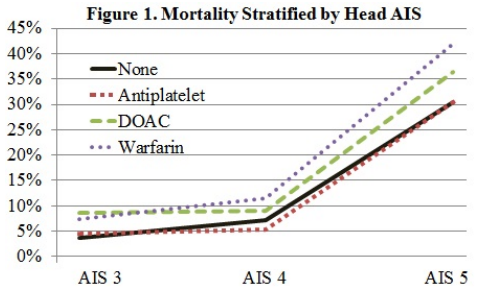I love this topic, especially since I’m getting a bit long in the tooth myself. The impact of night call is significant, even if it’s less noticeable in my younger colleagues. Theories (and some real data) abound that long stretches of stressful work is unhealthy and may lead to burnout. Modifications such as reduced call length or varying work type have been tried, but there is little data showing any real effect.
The trauma group at Grant Medical Center in Columbus, Ohio performed a month-long prospective study involving six Level I trauma centers. They set out to monitor fatigue levels due to varying call shift schedules and duration, and to see if they could identify any relationship to risk of surgeon burnout.
The authors used an actigraphy type device to monitor fatigue using an unspecified alertness model. These devices are typically worn on the wrist, and have varying levels of sophistication for determining sleep depth and fatigue. The surgeons self-reported their daily work activities as “academic”, “on-call”, “clinical non-call”, or “not working” and the lengths of time for each. A validated burnout inventory was taken at the end of the study to gauge burnout risk. The impact of 12 vs 24 hour call shifts was judged based on these variables.
Here are the factoids:
- The number of surgeons involved in the study was not reported (!!!)
- Mean and worst fatigue score levels were “significantly worse” after a 24 hour shift compared to 12 hours
- The proportion of time spent with a fatigue level < 70 (“equivalent to a blood alcohol of 0.08%”) was significantly longer during 24 hours shifts (10% vs 6% of time)
- There was no real correlation of call shift length or times spent in various capacities on the burnout score
- Pre-call fatigue levels correlated well with on-call fatigue, but not working pre-call did not
The authors concluded that fatigue levels relate to call length and correlate strongly with fatigue going into the call shift. They also noted that the longer shifts brought fatigue levels to a point that errors were more likely. They did not find any relationship to burnout.
There are a lot of things here that need explanation. First, the quality of the measurement system (actigraph) is key. Without this, it’s difficult to interpret anything else. And the significance data is hard to understand anyway.
The burnout information is also a bit confusing. Other than putting an actigraph on the surgeons and having them log what they were doing, there was no real intervention. How can this possibly correlate with burnout?
The authors are trying to address a very good question, the relationship between call duration, configuration, fatigue, and error rates. More importantly, but less studied in trauma professionals, is the impact of disrupted sleep on the health and longevity. These are very important topics and I encourage the authors to keep at it!
Here are my questions for the presenter and authors:
- Please provide some detail about the device used for actigraphy and exactly what was measured. There is substantial variation between devices, and very few are able to show sleep disturbance as well as actual brain wave monitoring. If this information is not extremely well-validated, then all of the results become suspect.
- How many subjects actually participated, and how can you be sure your fatigue score differences are really statistically significant? It’s difficult for me to conceive that a difference of only 3.7 points on the “fatigue level scale” from 83.6 to 87.3 is significant. This is especially relevant since the abstract states that a score < 70 is similar to a blood alcohol level of 0.08%. The average level is well above that. And does statistical significance confer clinical significance?
- And how about more info on the burnout inventory used? I presume the surgeons didn’t suddenly just start taking call for a month. They’ve been doing it for years. So why would a month of monitoring give any new indication of the possibility of burnout. It would seem that the usual surgeon lifestyle across this group is not leading to burnout. And I’m not sure this is accurate.
Reference: More call does not mean more burnout: a multicenter analysis of trauma surgeon activity with fatigue and burnout risk. AAST 2019, Oral abstract 52.



